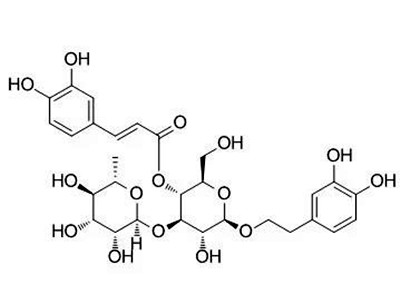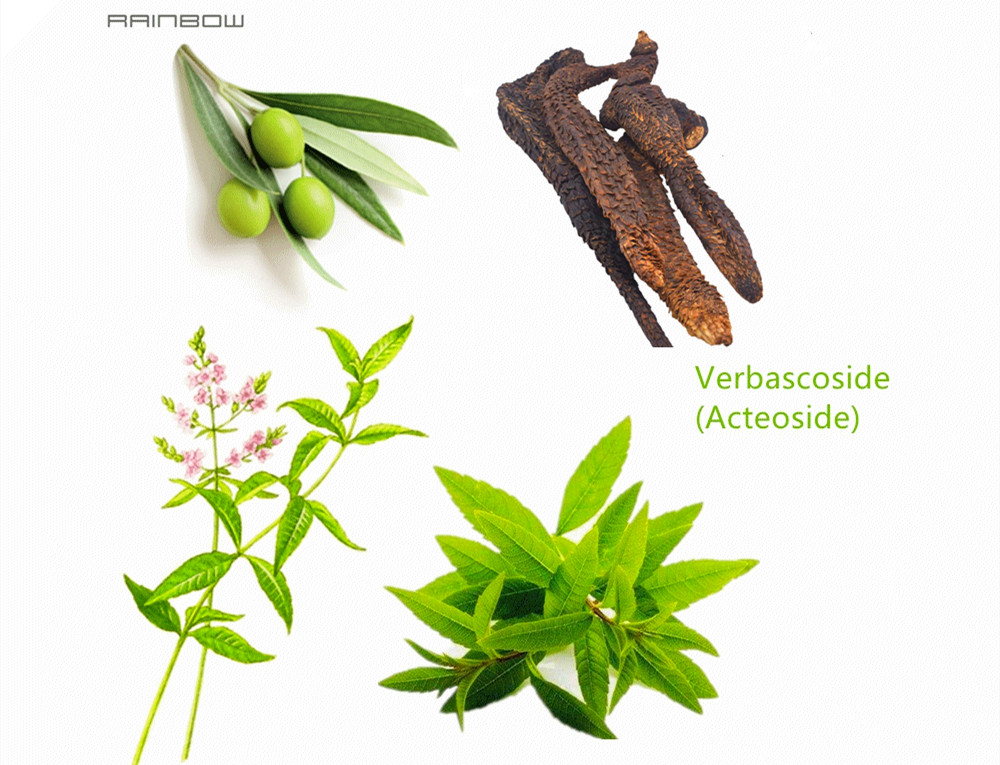Verbascoside, also known as Acteoside or Kusaginin, is a type of active component extracted from Cistanche tubulosa, Rehmannia Glutinosa Libosch and Lemon Verbena, is one of the most powerful free radical scavengers exhibiting a wide biological activity. Verbascoside is a disaccharide ester that contains a rhamnose unit linked to a glucose molecule via a bridge. The compound is produced in plant organs (especially the roots and leaves) and in vitro plant culture systems. This disaccharide possesses many health benefits, including neuroprotection and anti-inflammatory activity. Recent studies have also demonstrated its antioxidant effects while there some further studies are needed to determine its biological activity.
Sources of Verbascoside
Benefits of Verbascoside
Research has shown that verbascoside is capable of modifying the activity of mitochondria. The compound protects DNA from ROS and prevents the opening of the mitochondrial permeability transition pore. This action may alter the cellular and mitochondrial dynamics. The compound is known to modify the activity of PERK. This information could open new avenues for the development of treatments to reduce oxidative stress and inflammation.
There are no adverse side effects of Verbascoside and it may be a good treatment for patients with gas gangrene. The chemical compound inhibits CPA and PFO, two major components of the conjunctif. The raw data supporting these conclusions will be available to qualified researchers. Its safety was ensured by the Animal Care and Use Committee of the Jilin University, China.
Moreover, verbascoside is proved to be a natural antioxidant. It modulates redox homeostasis in btc3 cells. Several studies on the inhibitory activity of verbascoside in elastase were conducted to determine the compound’s effects on this enzyme. In vitro, the drug inhibits p.nitroalinine, which is responsible for many inflammatory disorders and aging. It has also been shown to inhibit the activity of the elastase 5a-reductase, which regulates androgen homeostasis in human skin.
Verbascoside is a also potent compound for other inflammatory diseases. It inhibits the overproduction of apoptotic cells, a crucial process in diabetes. It increases insulin content and improves b-cell function. In addition, it also reduces the bacterial burden. Its use in chemotherapy and other drugs is still in the early stages of development, but the drug is an effective treatment for many bacterial infections.
In a clinical trial, Verbascoside was found to significantly alleviate the symptoms of infected mice and reduced bacterial burden. The drug’s virulence was also significantly reduced, and no significant changes in the body parameters were noted during 21 days of oral administration. Its effectiveness in treating gas gangrene is likely to be further evaluated, as well as its ability to reduce the inflammation and mortality associated with these infections. Despite its positive effects, there are many issues that need to be resolved before verbascoside can be safely used in human disease. Moreover, clinical studies on animals are insufficient.





